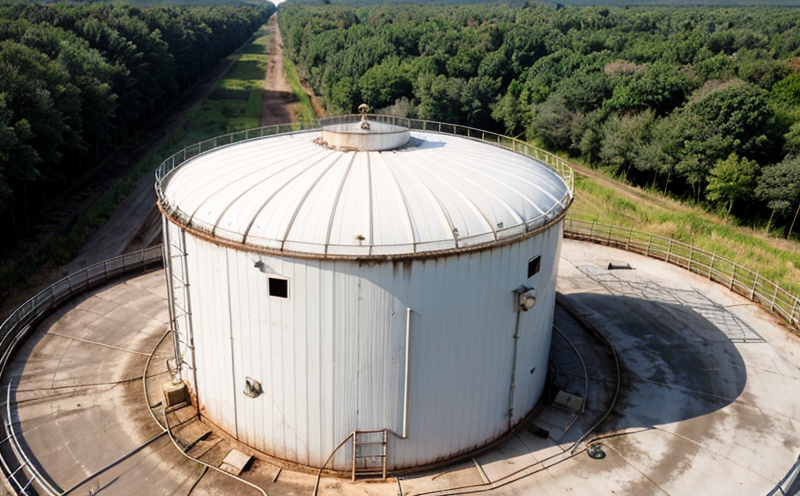Storage tank condition inspection
The integrity and safety of storage tanks are critical to a wide range of industries including petrochemicals, oil refining, water treatment, and chemical manufacturing. Storage tanks serve as essential components in these industries by storing large volumes of liquids such as petroleum products, chemicals, and potable water.
Storage tank condition inspection is an indispensable process that ensures the structural soundness, operational efficiency, and compliance with regulatory standards. This service encompasses a series of non-destructive evaluation (NDE) techniques aimed at assessing the internal and external conditions of tanks without compromising their integrity or functionality. The primary objective is to identify potential defects, corrosion, and other anomalies that could lead to catastrophic failures.
The importance of this inspection cannot be overstated. A single failure in a storage tank can result in significant financial losses, environmental damage, and safety hazards. Regular inspections allow for timely maintenance and repair, thereby extending the lifespan of tanks and preventing unforeseen disasters. Compliance with industry standards such as ISO 28519-4:2017 and API RP 579 is crucial to ensure that the inspection meets regulatory requirements.
The process typically involves several steps, including pre-inspection planning, field survey, data analysis, and reporting. During the pre-inspection phase, it is essential to gather information about the tank’s history, operational conditions, and previous inspections. This data helps in tailoring the inspection plan to meet specific needs.
Field surveys involve a thorough examination of both internal and external surfaces using advanced NDE methods such as ultrasonic testing (UT), magnetic particle testing (MT), liquid penetrant testing (PT), radiography, and eddy current testing. Each method has its unique advantages depending on the type of material being inspected.
During the internal inspection, the focus is on detecting corrosion, erosion, pitting, cracks, and other signs of degradation. For external inspections, issues like leaks, mechanical damage, and coating integrity are evaluated. The findings are then analyzed using specialized software to generate detailed reports that outline any defects found along with their location and severity.
The report also includes recommendations for corrective actions based on the inspection results. These recommendations may range from simple cleaning tasks to major structural repairs or even complete replacement of the tank if necessary.
Scope and Methodology
| Method | Description |
|---|---|
| Ultrasonic Testing (UT) | This method uses high-frequency sound waves to detect flaws within the material. It is particularly useful for identifying thinning in the walls of storage tanks. |
| Magnetic Particle Testing (MT) | Involves applying magnetic flux to ferromagnetic materials and inspecting them for surface or near-surface discontinuities by using a magnetic contrast agent. |
| Liquid Penetrant Testing (PT) | Applies a liquid penetrant to the surface of an object, allowing it to seep into minute cracks. After drying, a developer is applied to draw out the penetrant from the defects for visual inspection. |
| Radiography | Uses X-rays or gamma rays to create images that reveal internal structural details and flaws within the tank walls. |
| Eddy Current Testing (ECT) | A non-destructive testing technique used for inspecting conductive materials by inducing currents into the material surface, detecting changes in these currents due to defects or variations in the material. |
Why Choose This Test
Compliance with international standards such as ISO 28519-4:2017 ensures that inspections meet regulatory requirements and industry best practices.
Avoids costly downtime by identifying issues early through routine inspections.
Reduces the risk of catastrophic failures leading to severe environmental impacts or safety hazards.
Extends the useful lifespan of storage tanks, thereby reducing replacement costs and minimizing resource depletion.
Use Cases and Application Examples
Petrochemical plants: Regular inspections are crucial to ensure compliance with stringent safety regulations and prevent leaks that could contaminate nearby water sources.
Water treatment facilities: Identifying internal corrosion or structural weaknesses helps in maintaining the quality of treated water while ensuring operational efficiency.
Oil refineries: Early detection of defects prevents potential explosions and fires, safeguarding both personnel and equipment.
In each case, the storage tank condition inspection plays a pivotal role in upholding safety standards and optimizing resource management. By leveraging advanced NDE techniques, this service provides invaluable insights into the current state of tanks, enabling proactive maintenance strategies that enhance overall system reliability.





